Dogs and humans have shared a remarkable partnership for thousands of years — especially when it comes to hunting. Long before modern tools or technology, people relied on their canine companions to track, chase, and retrieve game.
Even today, that bond remains strong, especially in deer tracking. What makes dogs so exceptional at this task isn’t just loyalty or energy; it’s biology. According to the American Kennel Club, a dog’s nose is an incredible instrument, capable of detecting scents up to 100,000 times better than humans.
Some dogs even have special physical traits, like long ears and wrinkled skin, that help trap and hold scent particles while they work.
Whether you’re a seasoned hunter or just someone who enjoys the thrill of the trail, having the right tracking dog by your side can completely change the game. These dogs combine endurance, intelligence, and an unshakable drive to follow even the faintest trail. no matter the terrain or weather.
In this article, we’ll explore the best deer tracking dogs, what makes them stand out, and how they continue to prove that humans and dogs truly are the ultimate hunting team.
Key Takeaways
Meet the top deer-tracking pros, from the legendary Bloodhound to the fearless Bluetick Coonhound.
See why Beagles, Labs, and Foxhounds are born to chase scent trails that others can’t.
Discover how centuries of breeding created loyal, unstoppable hunters built for the wild.
Find your perfect tracking partner—smart, driven, and ready to follow the trail to the end.
Best Dog Breeds for Deer Tracking
1. Bloodhound
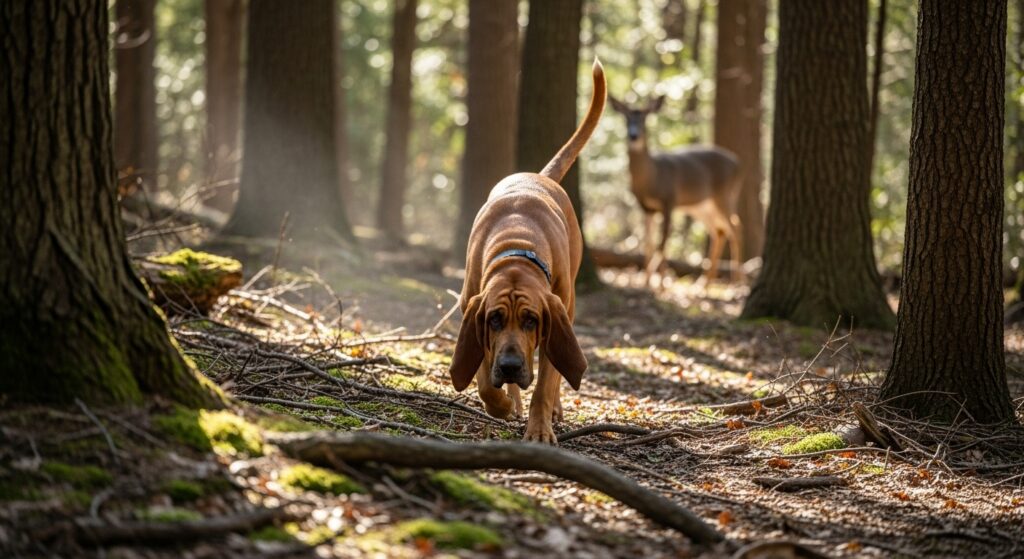
The Bloodhound is one of the oldest and most skilled scent hounds in the world, often called the “Sleuth Hound.” This ancient breed has been helping humans track deer and other animals since as early as 1066 BC and is believed to be the ancestor of many modern tracking dogs.
With their wrinkled skin, long floppy ears, and soulful eyes, Bloodhounds are gentle and affectionate at home — but once on a blood trail, they become unstoppable.
A Nose Like No Other
Britannica says that the Bloodhound has the strongest sense of smell among all dog breeds, with about 230-300 million scent receptors — nearly 40 times more than humans. Their long ears and loose skin help capture scent particles, guiding them toward the nose as they track.
These amazing dogs can follow trails that are several days old and across miles of tough terrain, which is why even police and search-and-rescue teams rely on them to find missing people and fugitives.
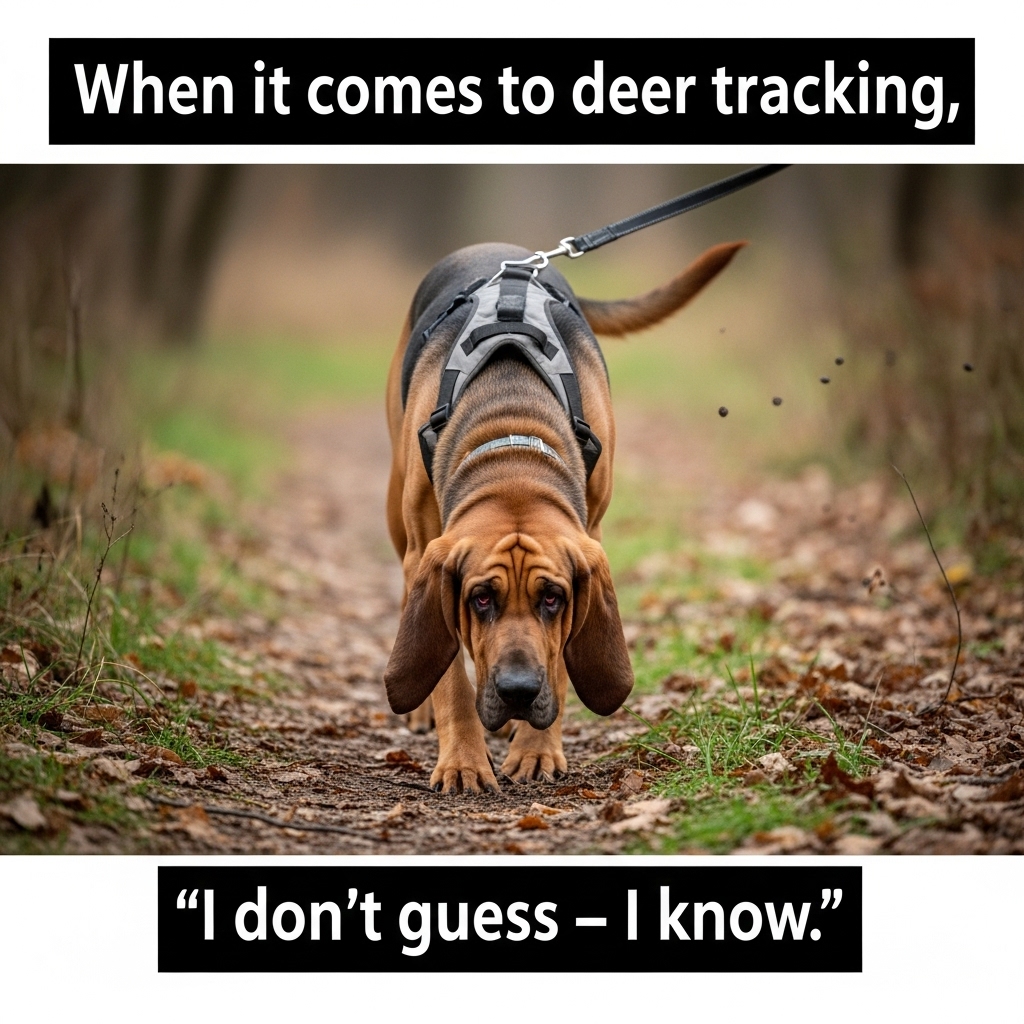
Personality and Care
Despite their detective-like tracking abilities, Bloodhounds are great family dogs known for being loving, calm, and patient, especially with children and other pets. They are pack dogs who enjoy company, but their determination can make them a bit stubborn when following a scent.
They need regular exercise, positive training, and a strong leash to keep them focused. You might also need to keep a towel handy — Bloodhounds are known droolers!
Why they’re great for deer tracking
Extraordinary scenting ability
Strong endurance and persistence
Gentle nature paired with relentless tracking instincts
2. American Foxhound
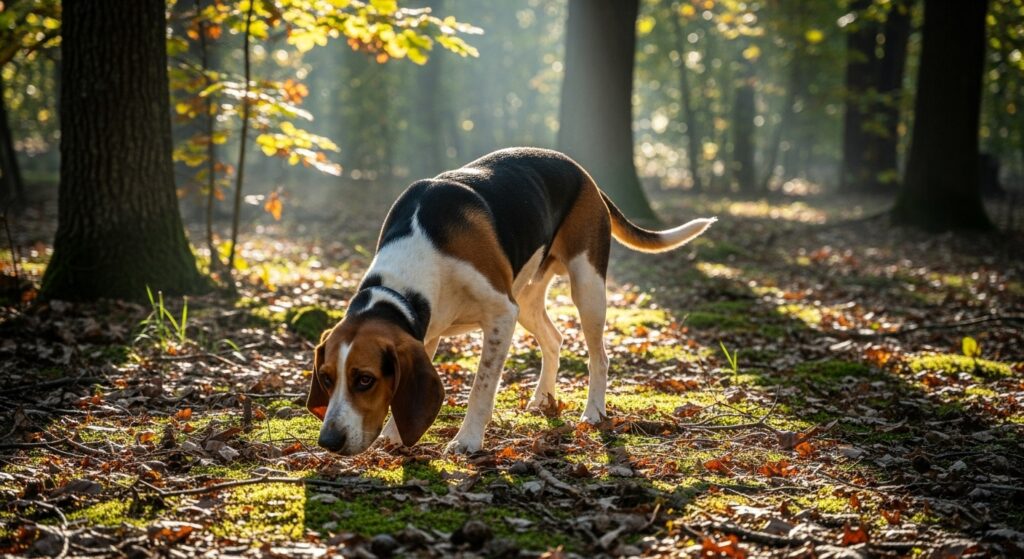
The American Foxhound has a proud and patriotic history. This breed owes much of its existence to George Washington, who was not only the founding father of the United States but also an expert dog breeder.
By crossing hounds from England, France, and America, he helped develop the American Foxhound — now the official state dog of Virginia. Sleek, athletic, and good-natured, this breed was originally bred to hunt foxes but later became a skilled deer tracker.
Built for the Chase
American Foxhounds are true running hounds. They have excellent noses, incredible stamina, and a strong hunting instinct. Bred to work in packs, these dogs can follow a scent trail for hours without slowing down.
Whether hunting foxes or deer, their determination and focus never fade. They’re also fast, graceful runners, making them ideal partners for long hunts across open terrain.

Personality and Care
At home, the American Foxhound is a great pet. They get along well with children, other dogs, and even cats. However, they do have an independent streak and a strong prey drive, so early training is important.
These hounds need plenty of exercise; without it, they can become bored or destructive. Their famous melodious baying is music to hound lovers but can be noisy for neighbors. With enough space and activity, they make affectionate and devoted companions.
Why they’re great for deer tracking
Excellent scenting ability to find deer
Passion for the chase and teamwork
Loyal, intelligent, and full of energy
3. Beagle
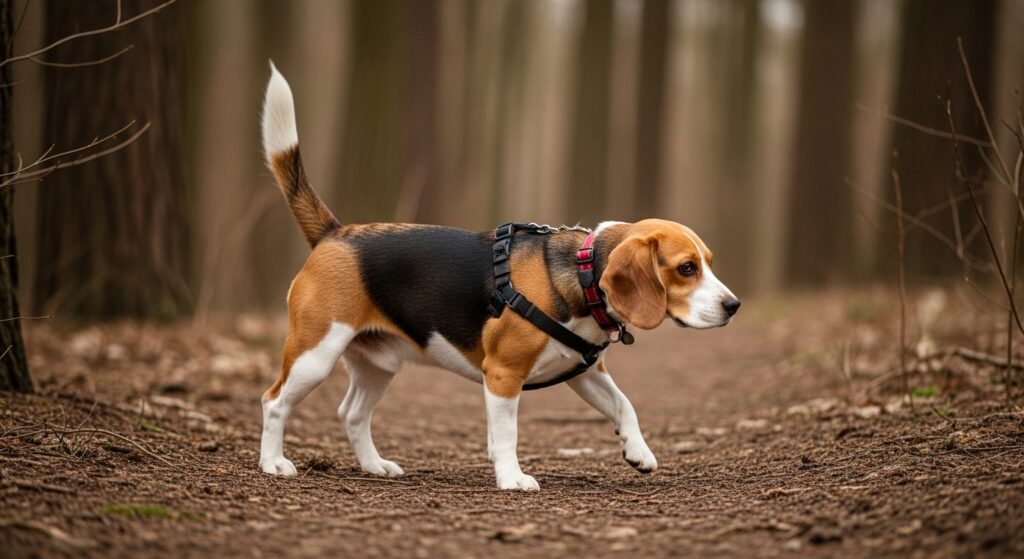
The Beagle was originally bred in England for tracking small game such as rabbits, hares, and even deer. Known as a “foothound,” it allowed hunters to pursue prey on foot instead of horseback, making it the perfect choice for those who couldn’t afford horses.
With a sharp nose, a cheerful spirit, and endless determination, the Beagle quickly became a favorite among hunters and families alike.
Born to Follow the Scent
Beagles have one of the best noses in the dog world, rivaling even larger hound breeds. Their strong sense of smell and loud baying make them excellent trackers, capable of following a trail for hours.
Once on a scent, a Beagle won’t give up until the mission is complete. Their colorful coats and bright personalities make them easy to spot in the field — and their happy energy keeps the hunt lively.
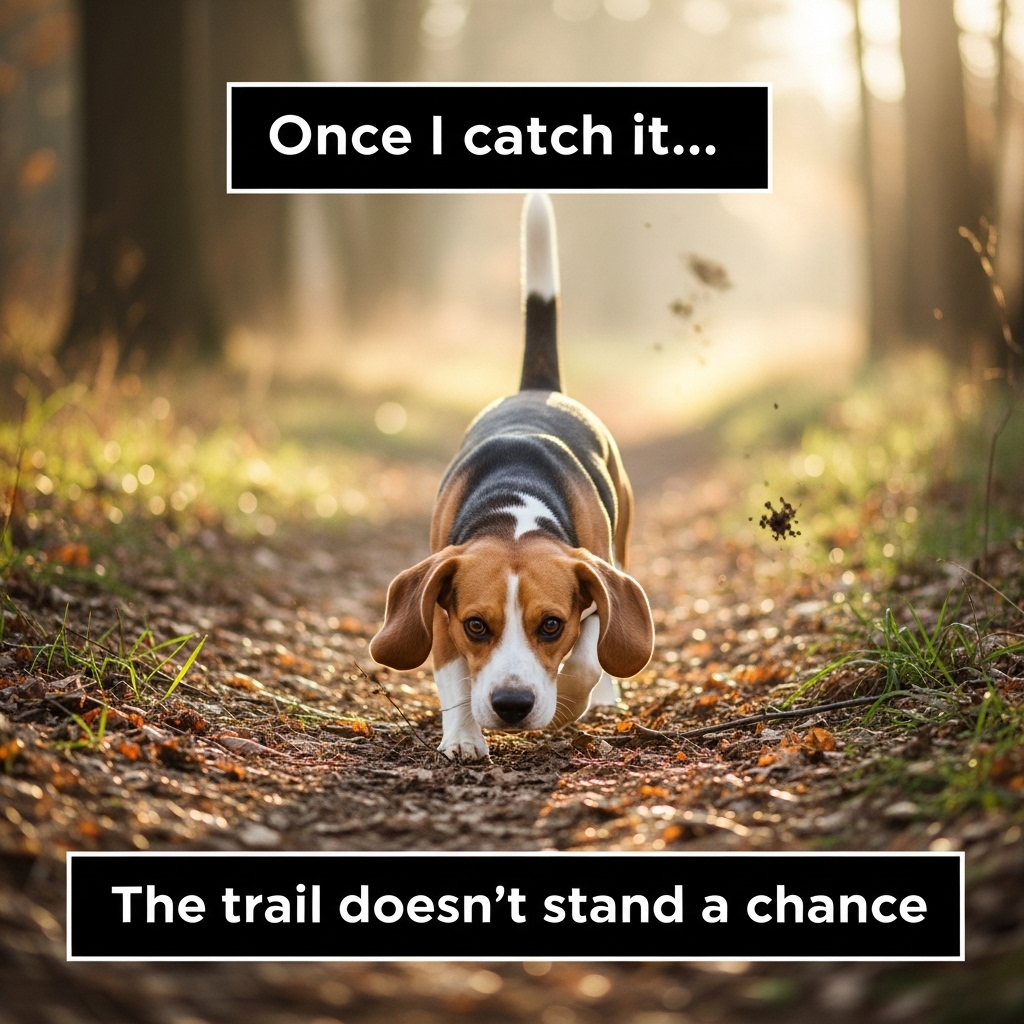
Personality and Care
Beagles are gentle, affectionate, and fun-loving. These small dogs were bred to hunt in packs, so they enjoy being around other dogs and people. Their happy-go-lucky attitude and eager-to-please nature make them wonderful family pets as well as skilled hunters.
However, they do need plenty of playtime and exercise to stay content and well-behaved. Their curiosity can sometimes lead them to wander off, so a watchful eye (and maybe a leash) is always a good idea.
Why they’re great for deer tracking
Exceptional scenting ability and persistence
Friendly, social, and easy to train
Strong voice that helps locate them and the deer easily
4. Bluetick Coonhound
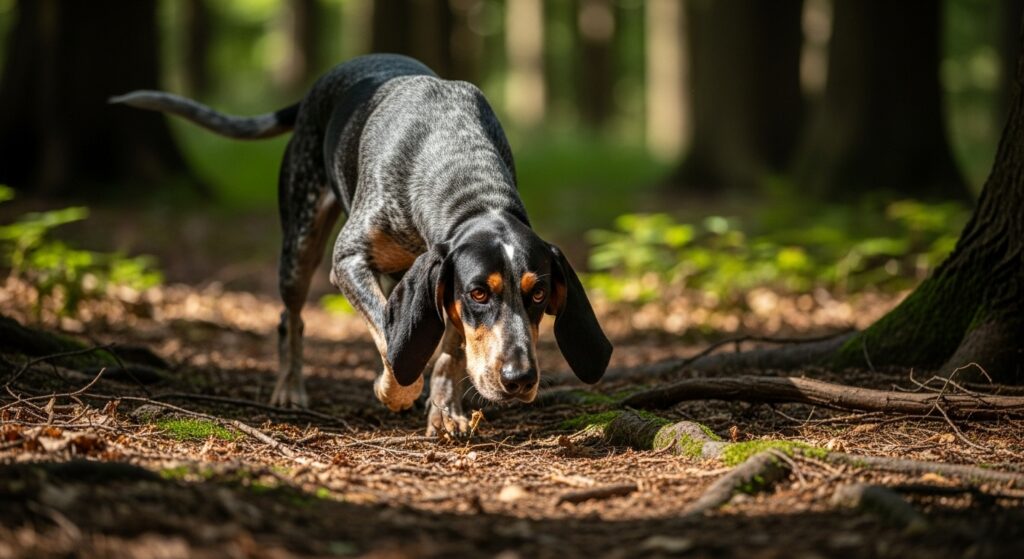
The Bluetick Coonhound is a fast, muscular, and determined scent hound known for its striking blue-mottled coat and soulful, pleading eyes.
Bred for hunting, Blueticks quickly became skilled at tracking raccoons, wild boars, and even mountain lions. Though built for the chase, they are also affectionate companions who love spending time with their families.
A Natural Hunter
Bluetick Coonhounds are born trackers with an extraordinary sense of smell and endless stamina. They are known for their “bawl mouth” bark, a long, melodic call that helps hunters follow their trail, even at night.
When on the hunt, they are bold, fearless, and relentless, capable of tracking game over miles of rugged terrain. These dogs thrive on activity and mental challenges, making them perfect for active hunters or outdoor-loving families.
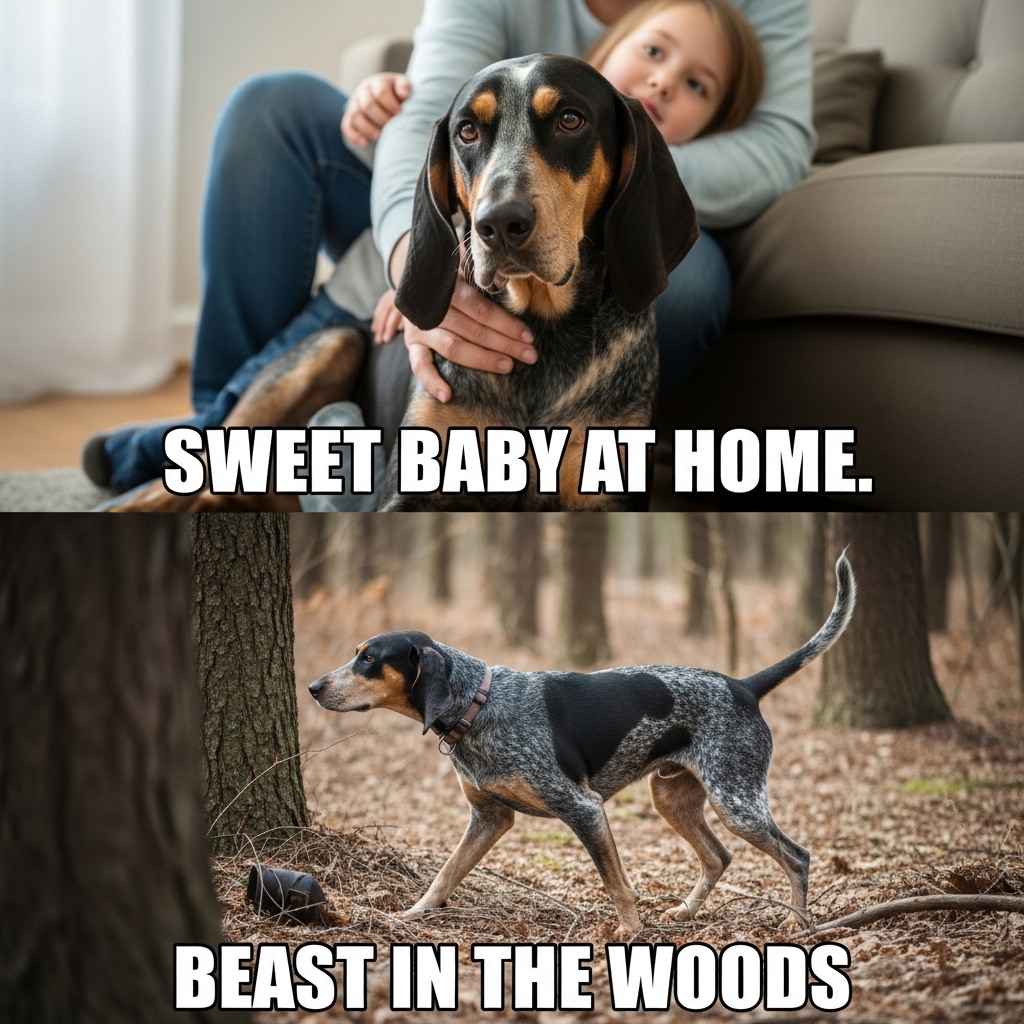
Personality and Care
At home, Blueticks are loyal, affectionate, and intelligent. They get along well with children and other pets but need lots of exercise to stay happy and calm.
Without enough activity, their strong prey drive can lead to boredom and howling “concerts.” Their glossy coat is easy to maintain with occasional grooming. Despite their energy, they love affection and form deep bonds with their owners.
Why they’re great for deer tracking
Outstanding scenting power and stamina
Fearless and determined hunters
Loyal, affectionate, and eager to please
5. Labrador Retriever
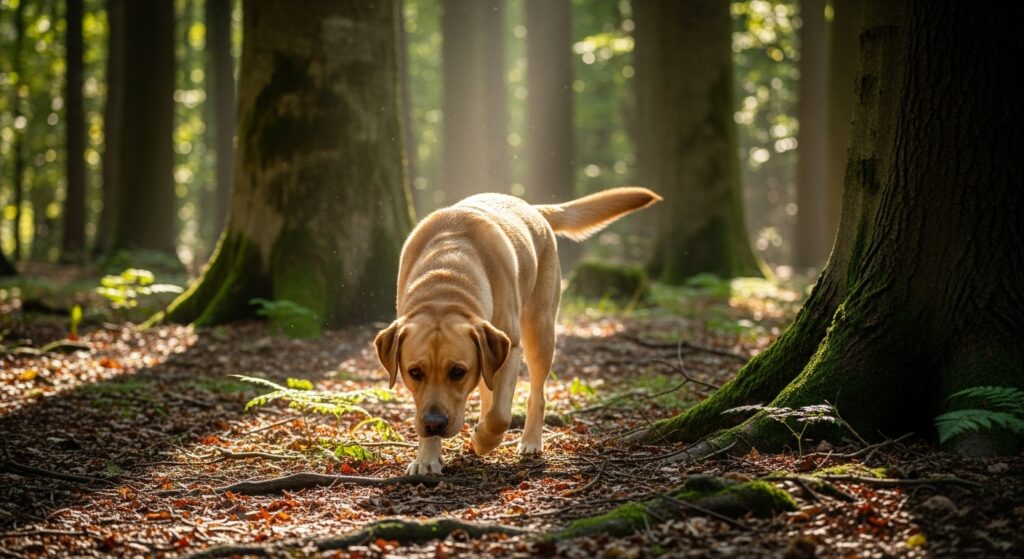
The Labrador Retriever is one of America’s most beloved breeds — and for good reason. Originally bred as a fisherman’s helper in Newfoundland, as per Purina, Labs were trained to retrieve nets and fish from icy waters.
Today, they’re not just top family companions but also skilled sporting and hunting dogs. With their friendly nature, intelligence, and strong work ethic, Labs have become one of the most versatile breeds in the world.
Born to Work and Play
Labs are energetic, enthusiastic, and athletic. They love swimming, running, and retrieving, making them excellent partners for outdoor adventures. Their powerful nose and eagerness to please make them great trackers, capable of following deer trails even in tough weather.
Traditionally known for duck hunting, Labs also excel at deer tracking, especially in cold or wet environments. They’re true all-weather dogs who never shy away from a challenge.
Personality and Care
The Labrador Retriever is gentle, loyal, and outgoing. They get along wonderfully with kids, other pets, and strangers alike. Labs are quick learners, but they do need regular exercise to keep their energy in check.
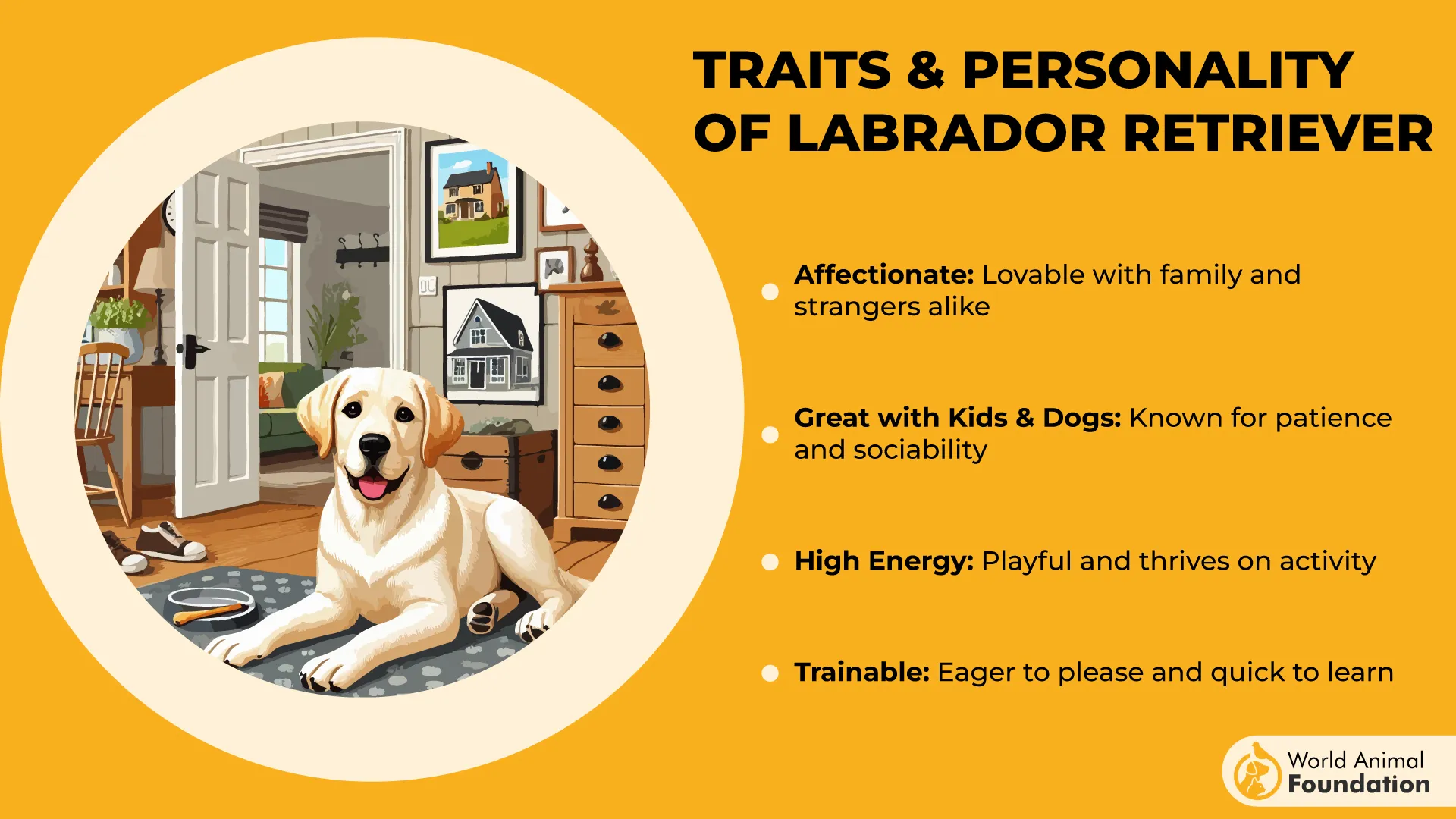
Long walks, swimming sessions, or fetch games are a must. Their short, dense coat is easy to care for, and their cheerful nature makes them a joy to have around.
Why they’re great for deer tracking
Strong scenting and retrieving ability
High endurance and adaptability to all weather
Intelligent, trainable, and eager to please
6. German Shorthaired Pointer
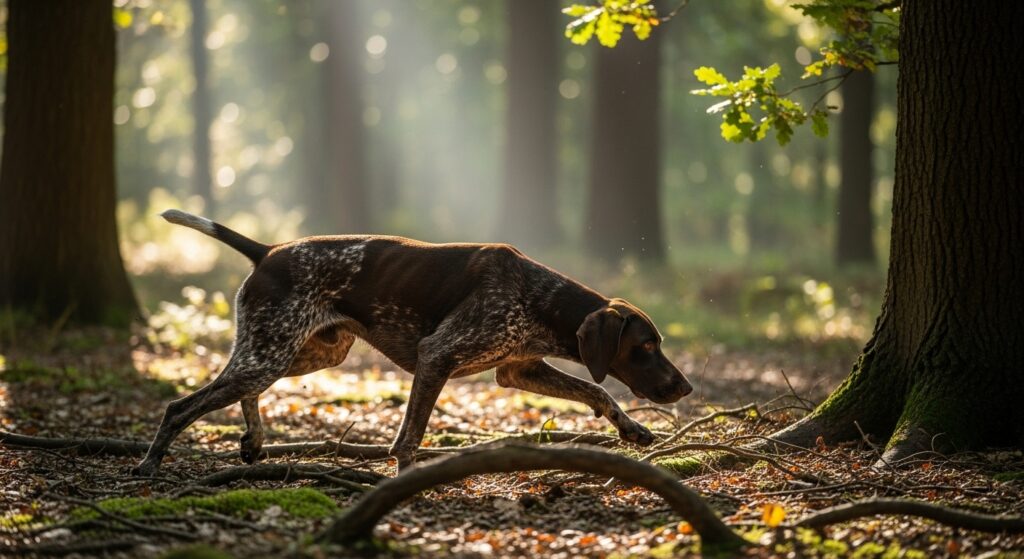
The German Shorthaired Pointer (GSP) is often called the “canine triathlete” of the hunting world. Bred in Germany as an all-purpose hunting dog, the GSP excels at tracking, pointing, and retrieving both on land and in water.
With ancestors like the Spanish Pointer, German bird dogs, and English Pointers, this breed was developed for speed, endurance, and precision. Sleek, athletic, and full of drive, the GSP is one of the most versatile hunting companions you can find.
Smart, Agile, and Tireless
German Shorthaired Pointers are quick learners with boundless energy. Their keen sense of smell and sharp focus make them exceptional trackers — able to follow deer trails or flush out birds with ease.
They love to work alongside their owners and thrive on activity, which is why they’re often seen dominating competitive hunting events.
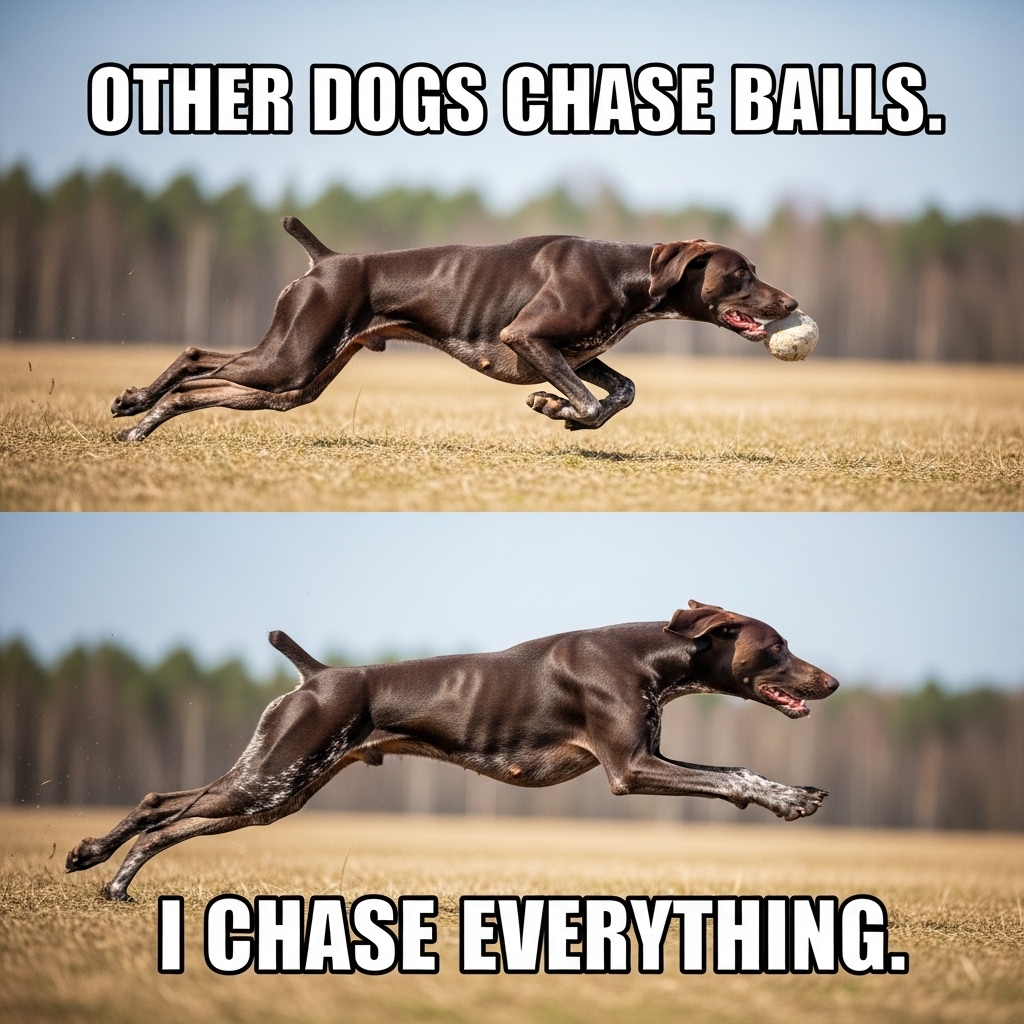
Their athletic build, strong legs, and cooperative nature allow them to switch seamlessly from tracking to retrieving. Whether in dense woods or open fields, they give their all until the job is done.
Personality and Care
GSPs are affectionate, loyal, and eager to please. They make excellent family dogs, provided they get plenty of exercise and mental stimulation. These energetic pups need daily outdoor time to stay happy and balanced.
Their friendly and intelligent nature makes them easy to train, but their strong prey drive means they may not be ideal for homes with smaller animals. With proper guidance and activity, though, they’re loving companions both in the field and at home.
Why they’re great for deer tracking
Agile, focused, and incredibly energetic
Skilled in tracking, pointing, and retrieving
Intelligent, obedient, and highly trainable
7. German Shepherd
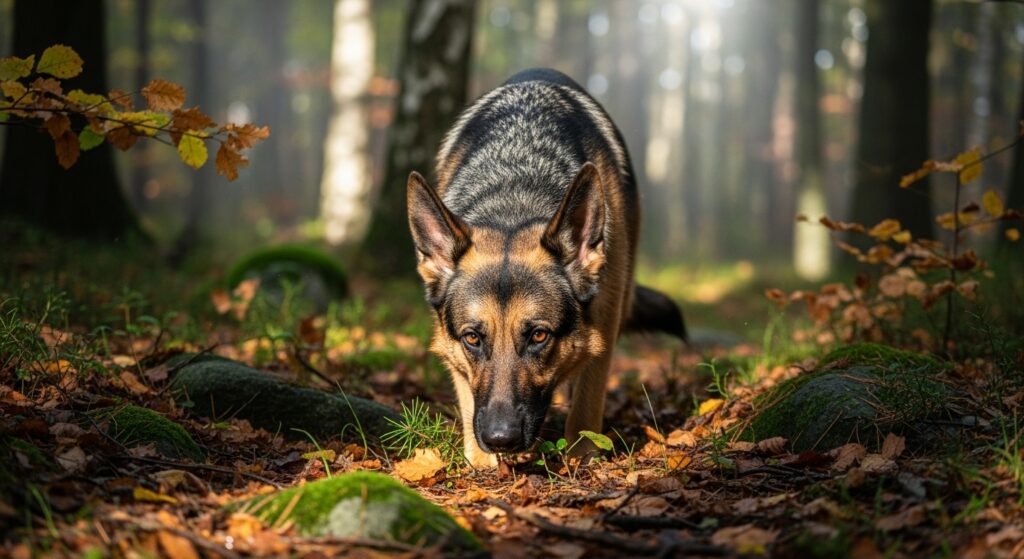
The German Shepherd is one of the world’s most respected working breeds — intelligent, courageous, and endlessly loyal. Originally developed in Germany in the late 1800s by Max von Stephanitz, this breed was created to be the perfect herding and service dog.
Over time, German Shepherds proved their worth in many fields — from police and military work to search-and-rescue and tracking. Known for their curiosity, courage, and confidence, they are true all-purpose dogs.
Smart, Strong, and Steady
German Shepherds are highly intelligent and quick learners, able to master complex commands and problem-solving tasks. Their exceptional sense of smell and strong focus make them outstanding trackers, capable of finding missing people, soldiers, or wounded deer.
Used by police and the military for generations, they’re known for working tirelessly without hesitation, even in dangerous conditions. Their natural alertness, loyalty, and steady temperament make them reliable partners in any situation.
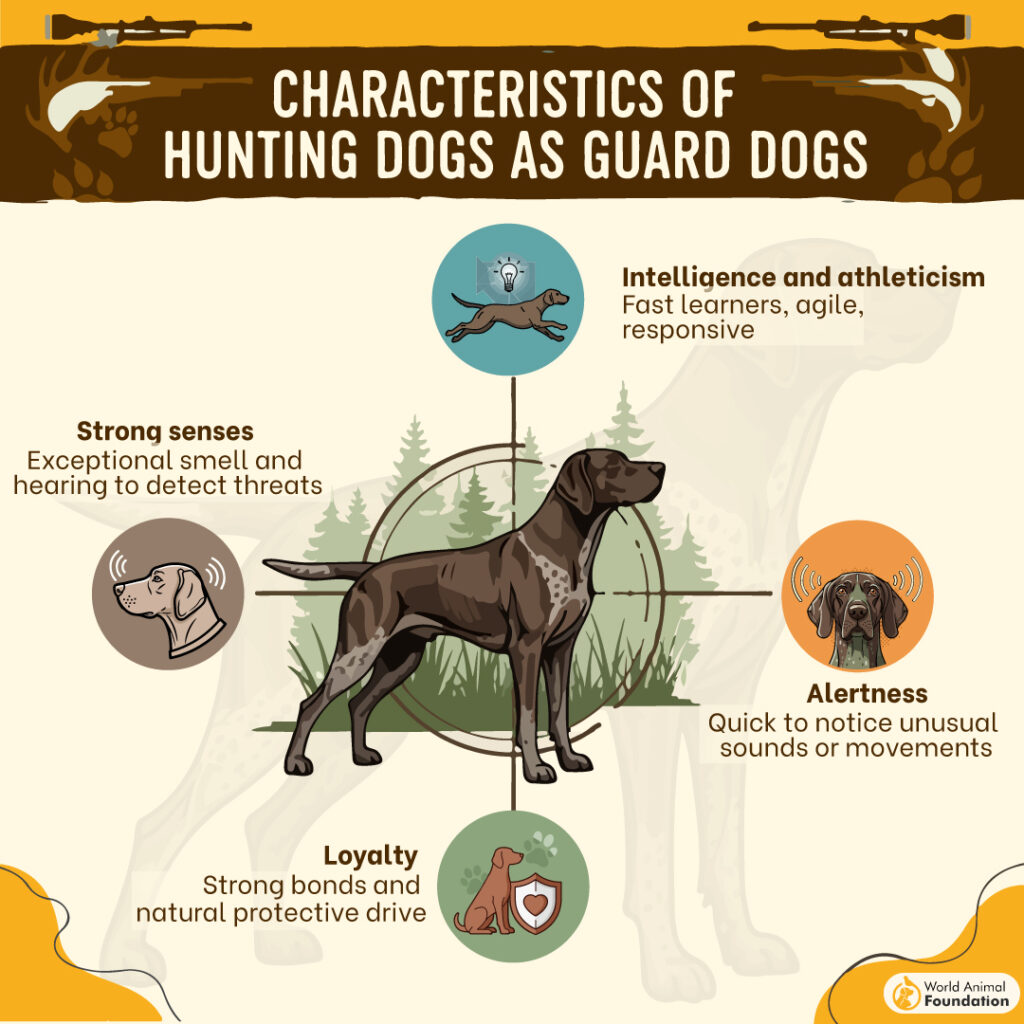
Personality and Care
Despite their serious working nature, German Shepherds are loving and protective family dogs. They are gentle with children, loyal to their families, and always alert. These dogs do best with regular exercise, mental challenges, and firm but positive training.
Their dense double coat is easy to maintain with regular brushing. While they may seem aloof with strangers, their devotion to their family runs deep — they’re brave, trustworthy, and always ready to step up when needed.
Why they’re great for deer tracking
Intelligent, focused, and easy to train
Courageous and dependable in any environment
Excellent scenting ability and strong work ethic
Conclusion
When it comes to blood trailing deer, the right dog can turn a frustrating hunt into a successful recovery. Skilled blood trailing dogs can pick up the faintest scent trail after a shot deer, following even the smallest drops of blood through thick cover or rough ground.
Whether it was a good shot or a bad shot, these incredible bloodhounds help hunters locate a dead deer with precision and efficiency. They don’t just track, they trail blood, stay calm under pressure, and work steadily until they catch the scent’s end.
For the most part, patience is key. After you shoot or lose sight of the buck, it’s wise to wait before sending in your dog. A good tracker works with control and focus, using its instincts to guide you right to your game.
These loyal companions make the process humane, effective, and deeply rewarding — turning every trail into a partnership built on trust and instinct.
Looking for other breeds? You can also check out the Basset Hound, Black Mouth Cur, German Shorthair Pointer, and Bavarian Mountain Hound.

